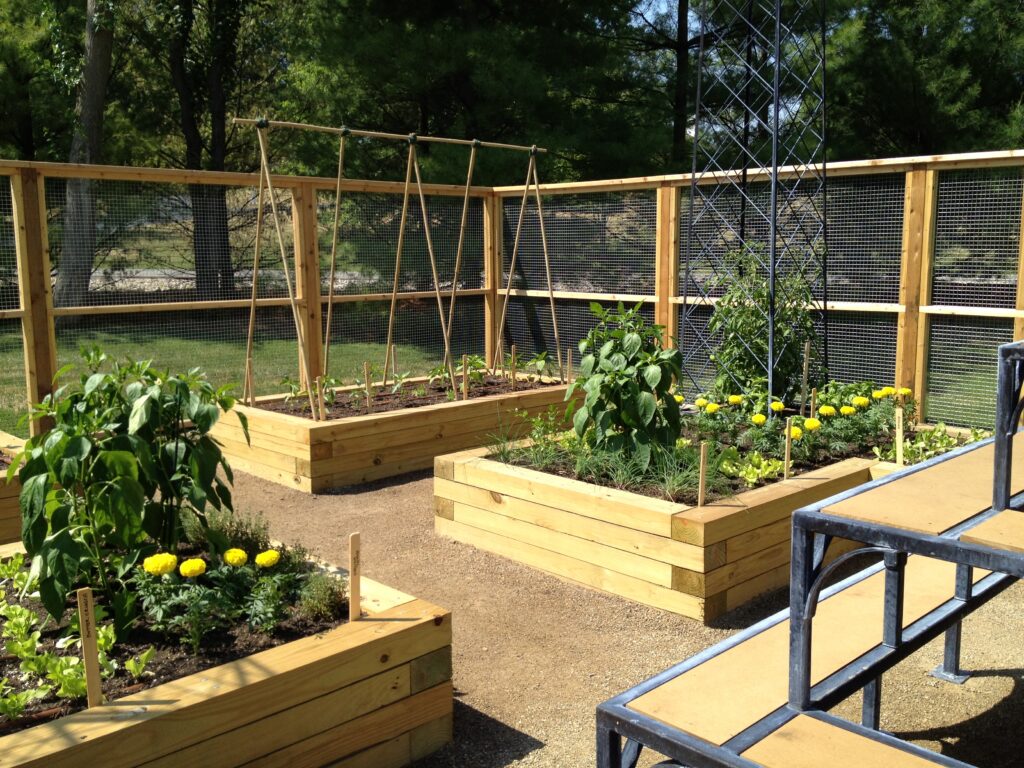In this article, we will explore the important role that fences play in enclosing vegetable gardens. Fences not only serve as physical barriers to protect your plants from external factors such as wildlife and pests, but they also provide a sense of privacy and create a visually appealing boundary for your garden. We will discuss the various types of fences that can be used for this purpose, their benefits and considerations, as well as factors to consider when choosing the appropriate size and shape of a fence. By the end of this article, you will have a better understanding of how fences can enhance and protect your vegetable garden, ensuring a bountiful harvest.
The Role of Fences in Enclosing Vegetable Gardens
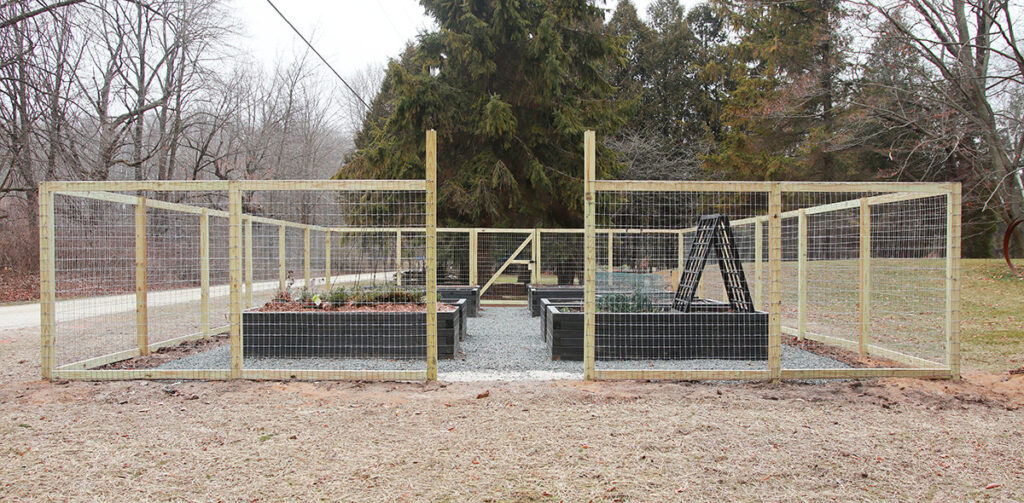
The Importance of Fences in Vegetable Gardens
When it comes to vegetable gardening, there are several reasons why fences play an important role in enclosing the garden. Fences define boundaries, protect plants from animals, and promote plant health and growth.
Defining Boundaries for Protection
One of the key reasons to have a fence in your vegetable garden is to define its boundaries. By clearly marking the perimeter of your garden, you can prevent accidental trampling or damage by people or pets. A fence serves as a visual reminder for everyone to avoid stepping into the garden area and helps maintain the integrity of your plants.
Preventing Damage by Animals
Animals, such as rabbits, deer, and squirrels, can wreak havoc on a vegetable garden. They are known to munch on leaves, nibble on fruits and vegetables, dig up newly planted seeds, and even trample delicate plants. A sturdy fence acts as a physical barrier, keeping these critters out and protecting your hard-earned harvest. It is essential to choose a fence design and height that effectively deters the specific animals in your area.
Promoting Plant Health and Growth
Well-designed fences can also promote the health and growth of your vegetable plants. By keeping out pests and animals, you minimize the risk of disease transmission and damage to your crops. This allows your plants to thrive in a protected environment, free from unnecessary stressors. Additionally, fences can provide support for climbing plants, such as tomatoes or beans, facilitating vertical growth and efficient space utilization.
Types of Fences for Vegetable Gardens
When it comes to choosing a fence for your vegetable garden, there are several options to consider. Each type of fence has its own advantages in terms of aesthetic appeal, durability, and functionality.
Wooden Fences
Wooden fences are a popular choice for vegetable gardens due to their natural appearance and versatility. They can be constructed in various styles, such as picket fences or privacy fences, depending on your needs. Wooden fences can be easily customized and stained to match the aesthetic of your garden or surrounding landscape. However, it is important to choose rot-resistant wood or treat the fence with a weatherproof sealant to ensure longevity.
Wire Fences
Wire fences are an economical and practical choice for vegetable gardens. They are typically made of galvanized wire mesh and can be installed to any desired height. Wire fences provide effective protection against burrowing animals and are transparent, allowing sunlight to reach your plants. However, they may not provide as much privacy as other fence types and can be less visually appealing.
Bamboo Fences
Bamboo fences offer a unique and eco-friendly option for enclosing vegetable gardens. This sustainable material is durable, resistant to rotting, and provides a rustic aesthetic. Bamboo fences can be designed as roll-out panels or individual poles, offering flexibility in installation. They are also ideal for creating a tropical or Asian-inspired garden theme. However, it is important to maintain bamboo fences regularly to prevent weathering and ensure their longevity.
Vinyl Fences
Vinyl fences are a low-maintenance and long-lasting option for vegetable gardens. They are typically made of PVC (polyvinyl chloride) and come in various styles, including picket fences, privacy fences, and decorative panels. Vinyl fences are resistant to rot, pests, and weathering, making them an excellent choice for areas with harsh climates. However, they may not offer the same natural appearance as wooden fences and can be more expensive.
Mesh Fencing
Mesh fences, such as chain-link or deer fencing, provide practical solutions for enclosing vegetable gardens. They are made of metal wires woven in a grid pattern, offering protection against small and large animals. Mesh fences are durable, economical, and allow for good airflow and sunlight penetration. However, they may not provide as much privacy as solid fences and can be less visually appealing.
Choosing the Right Height for a Vegetable Garden Fence
The height of your vegetable garden fence is a crucial consideration to ensure effective protection and enclosure. Several factors need to be taken into account when determining the appropriate fence height for your garden.
Determining Garden Size and Layout
The size and layout of your vegetable garden are important factors to consider when choosing the height of your fence. If you have a smaller garden, a shorter fence height may be sufficient to deter animals and define the boundaries. Conversely, larger gardens may require taller fences to provide comprehensive protection. Additionally, take into account any pathways or access points within your garden that may require a gate or lower fence section.
Considering the Plants in the Garden
The types of plants you have in your garden can also influence the optimal fence height. Some plants, such as corn or sunflowers, can grow quite tall and may require taller fences to provide adequate support and enclosure. On the other hand, if you are growing predominantly low-profile vegetables, a shorter fence height may be suitable. It is important to consider the potential growth height of your plants to ensure they are not restricted or overshadowed by the fence.
Addressing Potential Animal Threats
Different animals have varying jumping capabilities and behaviors, so it is important to select a fence height that effectively deters the specific animal threats in your area. For example, a deer fence should be at least 8 feet tall to prevent deer from leaping over it. On the other hand, a fence designed to keep out rabbits or groundhogs may only need to be 2 to 3 feet high. Research the common pests in your region and their typical jumping or climbing abilities to determine the appropriate fence height.
Materials for Vegetable Garden Fences
The choice of materials for your vegetable garden fence is crucial for durability, aesthetics, and functionality. Different materials offer varying levels of strength, resistance to weathering, and maintenance requirements.
Wood
Wood is a popular choice for vegetable garden fences due to its natural beauty and versatility. Cedar and redwood are commonly used due to their natural resistance to rot and insects. Pressure-treated wood is also an option, but it is important to choose a treatment that is safe for growing vegetables. Wood fences can be customized in various styles and can be stained or painted to match your garden aesthetics. However, they may require regular sealing or painting to maintain their appearance and protect against weathering.
Metal
Metal fences, such as wrought iron or aluminum, offer strength and durability for vegetable gardens. They can be designed in various styles, including ornamental fences or simple wire mesh panels. Metal fences are resistant to rot, pests, and weathering, making them suitable for long-term use. However, they can be more expensive compared to other materials and may require periodic maintenance to prevent rusting or corrosion.
Plastic
Plastic fences, specifically vinyl or PVC fences, are a low-maintenance and cost-effective option for vegetable gardens. They are resistant to rot, pests, and weathering, making them suitable for all types of climates. Vinyl fences come in various styles and colors, offering customization options to match your garden aesthetics. Additionally, plastic fences are easy to clean with a hose or pressure washer. However, they may not have the same natural appearance as wood fences and can be less suitable for areas with extreme temperatures.
Bamboo
Bamboo fences provide an eco-friendly and aesthetically pleasing option for vegetable gardens. Bamboo is a sustainable material that grows quickly and can be harvested without causing damage to the plant. Bamboo fences are durable and resistant to rot, pests, and weathering when properly maintained. They offer a unique natural look that complements a wide range of garden styles. However, it is important to choose high-quality bamboo and regularly treat the fence with a protective coating to prevent weathering.
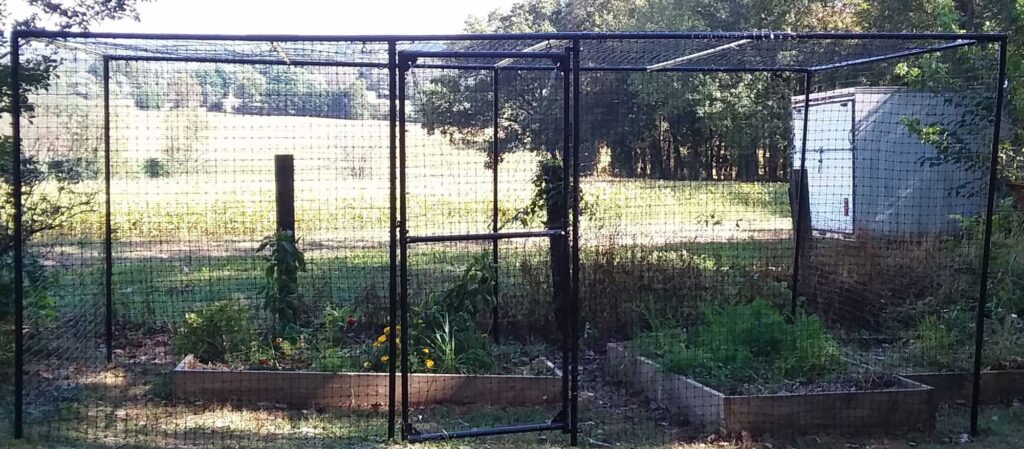
Considerations for Installing a Fence in a Vegetable Garden
Installing a fence in your vegetable garden involves several considerations, including budget, installation difficulty, environmental impact, and aesthetics. Each factor should be carefully assessed to ensure the fence meets your specific needs and requirements.
Budget and Cost
Before installing a fence, it is important to establish a budget and determine how much you are willing to spend. The cost of a fence can vary significantly depending on the type of material, height, length, and additional features such as gates or decorative elements. Consider your financial resources and weigh the benefits and costs of different fence options to find the one that fits within your budget.
Installation Difficulty
The complexity of installing a fence can vary depending on the chosen material and fence design. Some fences, such as wire or mesh fences, can be relatively easy to install by following basic instructions and using simple tools. On the other hand, wooden or metal fences may require professional installation or more advanced DIY skills. Consider your level of expertise and the amount of time you are willing to invest in the installation process.
Environmental Impact
When choosing a fence for your vegetable garden, consider the environmental impact of different materials. Some materials, such as vinyl or PVC, may have a higher carbon footprint due to manufacturing processes or non-biodegradable properties. Opting for sustainable materials, like bamboo or wood sourced from responsibly managed forests, can minimize the environmental impact. Additionally, consider the longevity of the fence and its potential for reuse or recycling.
Aesthetics
The appearance of your fence can greatly impact the overall aesthetic appeal of your vegetable garden. Consider the style and theme of your garden when selecting a fence design and material. Wooden fences can provide a traditional, rustic feel, while metal fences offer a more contemporary or ornamental look. Reflect on your personal preferences and the desired visual harmony between the fence and your garden landscape.
Enhancing Accessibility with Garden Gates
Garden gates are an essential component of a vegetable garden fence, providing accessibility while maintaining security and enclosure. When selecting a garden gate, it is important to consider factors such as size, placement, and locking mechanisms.
Selecting the Right Gate
The size and design of your garden gate should be selected based on your specific needs and preferences. Consider the width of pathways or access points within your garden and choose a gate that allows easy movement of tools, equipment, or wheelbarrows. Additionally, select a gate design that complements the overall fence aesthetics. You can opt for a gate that matches the style and material of your fence or go for a contrasting design for a statement look.
Gate Size and Placement
The size and placement of your garden gate can greatly impact its functionality and ease of use. Ensure that the gate is wide enough for comfortable passage, taking into account any potential future needs, such as moving larger equipment or harvest bins. Additionally, consider the location of the gate in relation to pathways or areas where you frequently access your garden. It should be strategically positioned for convenient entry and exit without hindering the overall flow of your garden layout.
Locking Mechanisms
The security of your vegetable garden can be enhanced by choosing the appropriate locking mechanism for your gate. Depending on your needs and preferences, there are various options available, including padlocks, latch mechanisms, or combination locks. Consider the level of security required and the ease of use when selecting a locking mechanism. For added convenience, you may also explore options such as self-closing hinges or gate springs that automatically close the gate behind you.
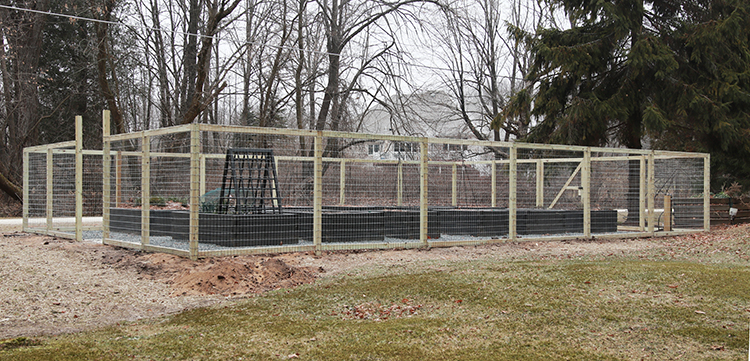
Fence Maintenance and Durability
To ensure the longevity and performance of your vegetable garden fence, regular maintenance is essential. By following proper maintenance practices and addressing any necessary repairs or replacements, you can extend the lifespan of your fence and maximize its effectiveness.
Regular Cleaning
Keeping your fence clean is an important part of maintenance, as it helps prevent the buildup of dirt, debris, and mold. The cleaning frequency may vary depending on the material of your fence, but a general rule is to clean it at least once a year or as needed. Use a gentle detergent or soap solution and a soft brush or cloth to scrub away any stains or grime. Rinse the fence thoroughly with water and allow it to air dry.
Repairs and Replacements
Inspect your vegetable garden fence regularly for any signs of damage or wear. Address minor repairs promptly, such as fixing loose boards or tightening screws. Replace any broken or rotted components as necessary to maintain the structural integrity of the fence. Regularly check for signs of rust, corrosion, or rusted wires in metal fences and apply appropriate treatments or replace damaged sections. By addressing repairs in a timely manner, you can prevent further damage and ensure the longevity of your fence.
Protective Coatings and Treatments
Applying protective coatings or treatments to your fence can help enhance its durability and resistance to environmental factors. The type of treatment will depend on the material of your fence. For wooden fences, consider applying a weatherproof sealant or stain to protect against moisture, UV rays, and insects. Metal fences can benefit from rust-resistant coatings or paint that provides a barrier against corrosion. Regularly inspect the condition of protective coatings and reapply them as needed to maintain their effectiveness.
Protecting Vegetable Gardens from Wildlife
Wildlife can pose a significant threat to vegetable gardens, with animals damaging crops, digging up soil, or consuming the fruits of your labor. Implementing appropriate animal deterrents and practices is essential for protecting your vegetable garden and ensuring a bountiful harvest.
Identifying Common Garden Pests
Understanding the wildlife in your area and their typical behaviors is crucial for effective pest management in your vegetable garden. Common garden pests include rabbits, deer, squirrels, birds, raccoons, and groundhogs. Research the specific pests prevalent in your region and familiarize yourself with their feeding habits and preferred entry points. This knowledge will help you select the most appropriate deterrents and preventive measures.
Implementing Animal Deterrents
There are various animal deterrents available to protect your vegetable garden from wildlife. Physical barriers, such as fences, netting, or mesh covers, are often the most effective at keeping animals out. Choose a fence design that is specifically tailored to deter the common pests in your area. Additionally, consider installing motion-activated sprinklers, reflective tape, or noise-emitting devices to startle and deter animals. Some gardeners also opt for natural deterrents, such as predator urine, strong-smelling plants, or homemade repellents made from garlic or chili pepper.
Utilizing Companion Planting
Companion planting involves strategically growing specific plant combinations to repel pests or attract beneficial insects. By interplanting certain aromatic, pest-repellent plants with your vegetables, you can create a natural deterrent for common garden pests. For example, planting marigolds alongside your vegetables can deter rabbits and deer with their strong scent, while attracting beneficial insects like ladybugs and pollinators. Research companion planting combinations suitable for your vegetable garden and experiment with different plant groupings to find what works best for you.
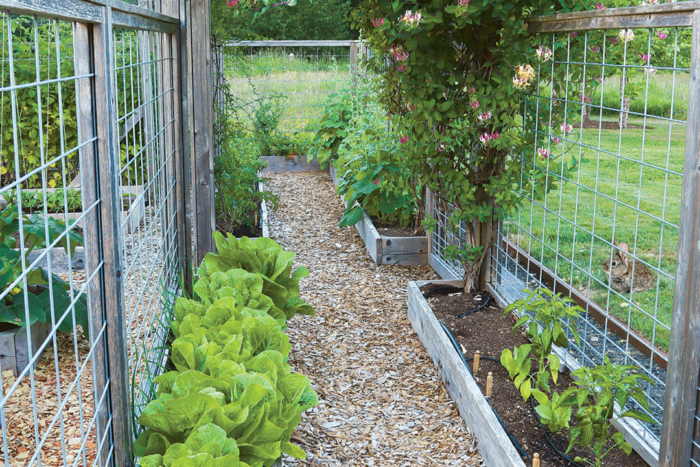
Addressing Privacy and Aesthetics with Fences
In addition to their functional benefits, vegetable garden fences can also enhance privacy and add aesthetic appeal to your outdoor space. Considering factors such as desired level of privacy and the visual impact of the fence can help create a harmonious and inviting garden atmosphere.
Adding Privacy to Your Garden
If privacy is a concern in your vegetable garden, select a fence design that provides adequate coverage. Solid fence options, such as wooden privacy fences or vinyl panels, offer optimal privacy by completely blocking the view from outside. Ensure that the fence height is appropriate to prevent any line-of-sight into your garden. Additionally, consider incorporating trellises or planting tall, dense plant varieties along the fence line to further enhance privacy.
Enhancing Aesthetics with Decorative Fences
Vegetable garden fences can be more than just functional; they can serve as a decorative element that adds visual interest and complements your garden design. Choose a fence style and material that harmonizes with the overall landscape and style of your outdoor space. Wooden fences with decorative lattice panels, ornamental metal fences, or bamboo fences can provide a unique and appealing look. Additionally, consider incorporating planters, hanging baskets, or climbing vines to soften the appearance of the fence and create a cohesive visual impact.
Common Questions and Answers About Vegetable Garden Fences
-
What is the best height for a vegetable garden fence?
- The appropriate height for a vegetable garden fence depends on factors such as garden size, plant types, and potential animal threats. In general, a fence height of 4 to 6 feet can adequately deter common garden pests. However, taller fences may be required for plants that can grow significantly taller or for deterring larger animals such as deer.
-
Which materials are most durable for a vegetable garden fence?
- Materials such as cedar, redwood, vinyl, and metal are known for their durability and resistance to weathering. These materials can withstand the elements and provide long-lasting protection for your vegetable garden. It is important to choose materials that are specifically treated or naturally resistant to rot, pests, and moisture.
-
How can I protect my vegetable garden from small animals?
- To protect your vegetable garden from small animals, consider installing a fence with a fine mesh or wire spacing that prevents animals from squeezing through. Additionally, bury the bottom of the fence or install an apron to deter burrowing animals. Using natural deterrents, such as strong-smelling plants or predator urine, can also help keep these pests away.
-
What are the advantages of using a bamboo fence in a vegetable garden?
- Bamboo fences offer several advantages for vegetable gardens. They are eco-friendly, as bamboo is a rapidly renewable resource. Bamboo fences are also durable, resistant to rotting, and can provide a unique, natural aesthetic to your garden. With proper maintenance, bamboo fences can withstand various weather conditions and offer a long lifespan.
-
What maintenance tasks are necessary for a wooden fence in a vegetable garden?
- Wooden fences require regular maintenance to preserve their appearance and longevity. Tasks may include cleaning the fence annually, sealing or staining the wood to protect against moisture and UV rays, and addressing any repairs or replacements as necessary. Regular inspections should be conducted to identify rot, pests, or loose components.
-
Are vinyl fences a good option for vegetable gardens?
- Yes, vinyl fences can be a good option for vegetable gardens. They are low-maintenance, resistant to rot, pests, and weathering, and can provide long-lasting protection for your garden. Vinyl fences come in various styles and colors, offering customization options to match your garden aesthetics.
-
How do I choose the right gate for my vegetable garden fence?
- When choosing a gate for your vegetable garden fence, consider factors such as size, design, and security. Ensure that the gate width accommodates easy movement and any potential future needs. Choose a gate design that complements the overall fence aesthetics. Explore various locking mechanisms to ensure the security of your garden.
-
What are some effective methods to prevent wildlife from damaging a vegetable garden?
- Some effective methods to prevent wildlife damage include installing fences or mesh covers, using motion-activated sprinklers or noise-emitting devices, and incorporating natural deterrents such as predator urine or strong-smelling plants. Companion planting can also play a role in repelling pests and attracting beneficial insects.
-
Can a vegetable garden fence provide privacy?
- Yes, a vegetable garden fence can provide privacy depending on its design and height. Solid fence options, such as wooden privacy fences or vinyl panels, offer optimal privacy by completely blocking the view from outside. It is important to choose a fence height that prevents any line-of-sight into your garden.
-
How can I make my vegetable garden fence aesthetically pleasing?
- To make your vegetable garden fence aesthetically pleasing, consider the design and material of the fence. Wooden fences can provide a natural and rustic look, while metal fences offer a contemporary or ornamental appearance. Incorporating trellises, hanging baskets, or decorative elements can further enhance the visual appeal.
